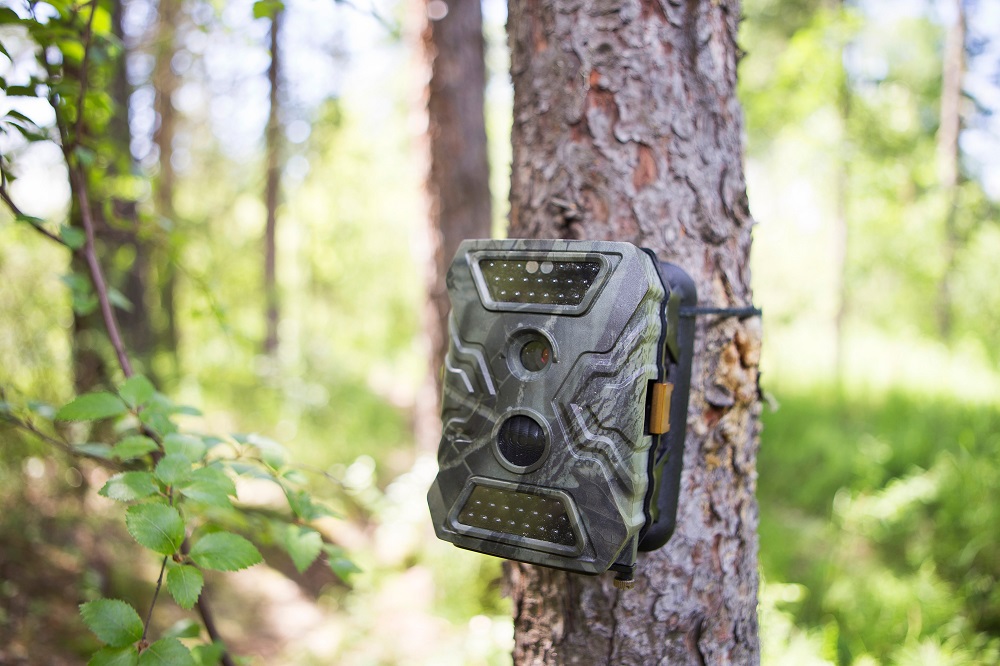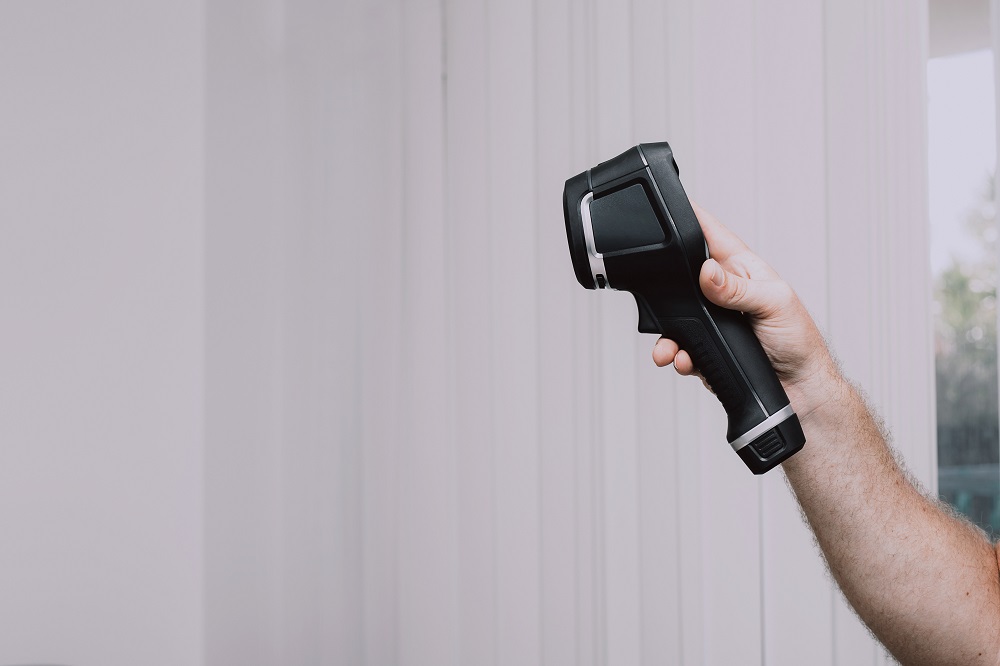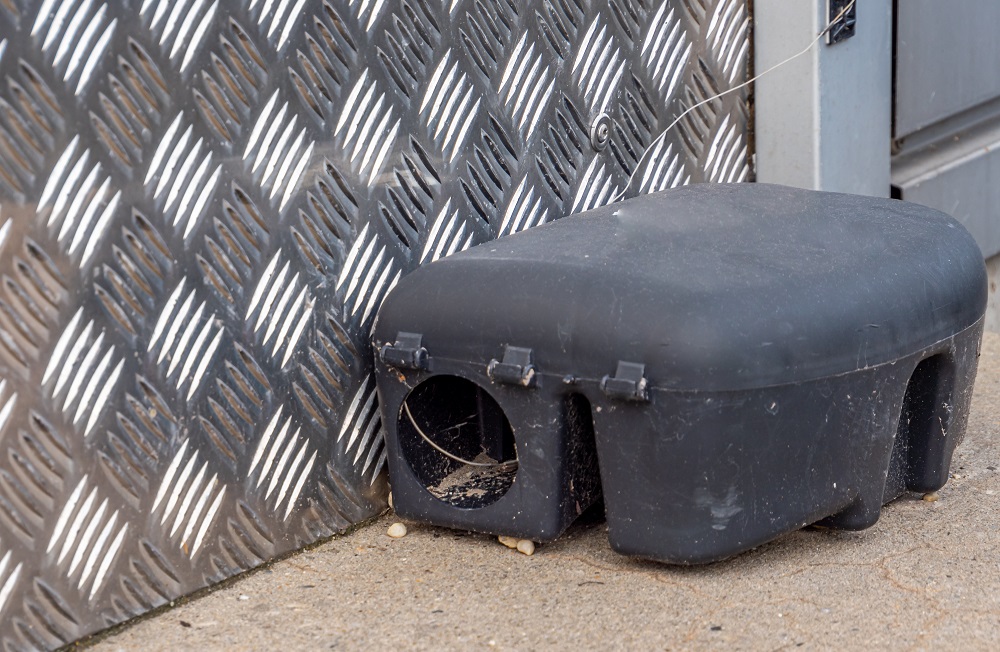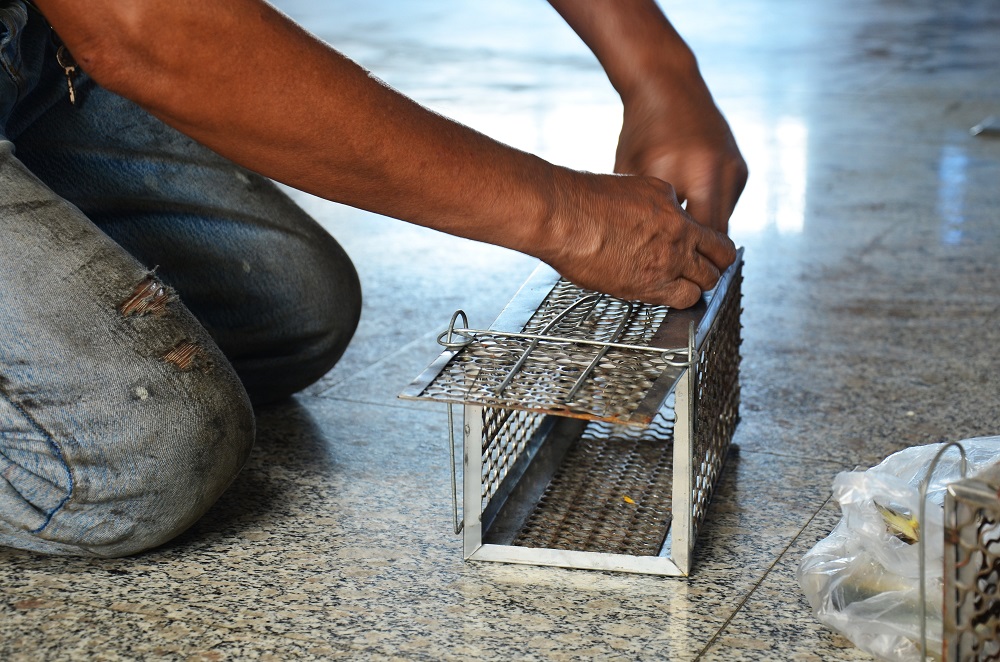Animal pests can come in all forms and sizes, from bed bugs, fleas and mosquitoes, to voles, moles and gophers. To a farmer, pests cause destruction to crops and livestock, while in the home they can be a nuisance, causing damage and spreading disease.
Conventional pest control methods, although tried and tested, have some drawbacks. The most popular form of pest control has been the use of pesticides, insecticides, and various other poisons. These not only affect the pest itself, but can impact on its environment as well. A mouse that ingests a rodenticide bait (or rat poison), will then be toxic to any other animals that hunt and in turn ingest the rodent, including household pets, birds and other wildlife.
According to an EPA assessment, a number of widely used pesticides (Chlorpyrifos, Malathion, Diazinon, Carbaryl, Methomyl), were characterized as hazardous to endangered species in the U.S. Furthermore, the analysis determined that two of these, Malathion and Chlorpyrifos, were found to be harmful to almost all of the 1,700 most endangered plants and animals in the U.S.
Types of Pest Control Technology
Technology has played an ever increasing role in our daily lives, from household appliances and gadgets, to sophisticated computers that help keep our planes safe, so it should not come as a surprise to see technology lending a helping hand when it comes to pest control.
[lwptoc]
Electronic Monitoring
One of the great benefits that modern technology has brought to the pest control industry, is the ability to remotely detect and monitor a variety of pests. Electronic monitoring provides real time data about what pests are lurking, where they are, and the scale of their activity, removing any guess work and allowing for improved methods of dealing with the situation.
Electronic monitoring can lead to early outbreak detection and treatment, which can prevent infestations that lead to large scale property damage, crop loss, and other serious problems. It is an integral part of any effective pest management system, allowing key strategy decisions to be implemented quickly and decisively.
Modern pest control methods, encompass the innovative use of (in the main), already existing technologies and software techniques. As a result of this inherent sophistication, a number of benefits have evolved, among them the move away from the use of toxic substances (making it safer for humans and the environment), while many of the new methods prefer to deter or repel, rather than kill pests.
We’ll start by looking at devices and techniques that help detect and monitor pest activity, and then move on to actual methods of pest control.
Trail Cameras

One of the best methods of detecting pests, involves the use of trail cameras (also known as game or remote cameras). Trail cameras are rugged and weatherproof, and can be easily mounted, strapped or attached to trees, posts, beams, etc. They can be set to trigger by various means, including sound, motion detection, and proximity sensors, making them an excellent surveillance device.
Trail cameras are used by photographers in remote, outdoor areas to photograph wildlife, where access may be difficult, and conditions may be harsh and inconvenient for long stays. They can be left there for long periods to capture valuable photos, video footage, and even audio. Some are even capable of capturing photos in complete darkness with no visible flash.
Used for pest control, they can be an invaluable asset in surveillance and for gathering information about what pests are sneaking about in remote or infrequently accessed areas.
Drones
Drones play a dual role in pest control. They are effective in accessing hard to reach places, and can be fitted with an on board camera or thermal imagining device. In this guise, they are referred to as sensing drones. They allow pest control professionals to safely check on roofs and rooftops without having to physically climb up there, or can traverse a crop field looking for telltale signs of pest damage using advanced imaging technologies.
Drones are also used as a delivery mechanism, known as actuation drones. They can home in on identified pest hot spots, and with accuracy, release or spray pesticides exactly where they are needed. This kind of precision application, minimizes pesticide drift into adjoining fields or even households, which can cause environmental contamination.
Thermal Imaging Technology

Thermal imaging is a non-intrusive solution for helping locate pests inside cavities, ceiling voids, walls, and other hidden places. Thermal cameras pick up infrared radiation (as opposed to visible light with an ordinary camera), and are used to generate a heat map of a surface (e.g. a wall), that can be examined for temperature irregularities, such as unusual regions of heat or cold.
While pests in the open that are active during the night, can be tracked with an infrared camera (since it can also work in complete darkness), thermal imaging is not capable of seeing through surfaces, and therefore isn’t capable of detecting a pest moving behind a wall. However, it will detect any heat transferred to the wall’s surface over a long period of time, by a nest within the wall for example.
More sensitive thermal imaging cameras can detect temperature variations due to the build up of moisture, holes in insulation, cavities in woodwork, and other signs of pest damage. The resulting thermal image produces irregular but characteristic thermal signatures. What’s more, the nature of the irregularity is usually an indicator as to the type of pest.
For example, carbon dioxide is released from the digestive system of termites, which generates heat. Termites also construct mud tubes that have high moisture content. These create irregular heat patterns on the surface of walls, ceilings, and floors, which helps identify the culprit.
Rodents and other pests build nests that give off heat, or damage walls and make holes in insulation material, creating cold spots that can be seen in the thermal image.
Although being cold-blooded, collectively, insects also generate heat. Wasp nests, beehives, and other clusters of social insects, can generate enough heat to be detected with a thermal imaging camera.
AI-Driven Sensing Technology
A very sophisticated and fairly recent technology for locating pests in trees combines highly-sensitive vibration sensors and artificial intelligence to detect potentially dangerous pests boring inside trees.
Vibro-acoustic insect libraries were created by strapping sensors around trees, which recorded the tiny vibrations produced by wood-boring insect larvae. Artificial intelligence is then used to compare live signals recorded in forests against those in the libraries and identify the distinctive vibrations of various insect species.
The technology helps identify infestation well before damage becomes visually apparent on the surface of a tree.
Traps, Deterrents, Repellents
Dealing or treating the problem of pests and pest infestations has two approaches. One is to kill the pests, the other is to deter or repel them. There are a number of new pest control technologies that adopt one or the other approach, although is an ever increasing trend to deter or repel, rather than kill pests.
Electronic and Intelligent Bait Stations for Rodents

Traditional methods of dealing with mouse and rat infestations has been to use rodenticides (or rat poisons), usually left somewhere where the mouse or rat will ingest the poison. This comes with a number of dangers, such as its accessibility to creatures other than the intended, including household pets, or worse still, small children.
Bait stations, which are small cubicles, usually with one hole for entry and another for exit, help address this issue by restricting (as much as possible) access to the poisoned bait, only to rodents, and not other animals.
The rodent enters the bait station, feeds on the bait, and leaves. Typically, baits are multiple-dose (anticoagulant) rodenticides, and rodents must feed on these for several days in order for them to be effective.
However, many rodent populations have started developing resistance to some of the more traditional rodenticides, like Warfarin, and so other, newer poisons have been introduced. This still leaves the problem however, that poisoned rodent carcasses could also potentially kill scavenging animals feeding on the carcass.
The solution is found in the electronic bait station. These battery powered devices, form an electric circuit when a rodent enters the station and stands on the metallic plate, killing the rodent by electrocution. Not only are these safer for other wildlife (which will no longer feed on a poisoned carcass), they are also more humane for the pests themselves, as death is almost instant.
Predator Deterrent Lights
Predator deterrent lights are a series of solar powered, flashing LED lights that deter night predators. Nocturnal predators are very wary and cautious about their surroundings, hunting in safe areas where they won’t be noticed. Predator deterrent lights appear like eyes, giving the impression that another, larger animal is lurking about.
Depending on the size of the area to be protected, several lights may be required, and have been effective in deterring coyotes, foxes, raccoons, deer, even lions. Some lights are motion activated, but these devices are more effective if the predator can see the lights from a distance.
Motion Activated Sprinkler
The motion activated sprinkler uses an infrared motion sensor, day and night, to detect any size animals. It provides adjustable detection against a wide variety of unwanted animals. It humanely repels pests by using a harmless spray of water.
Ultrasonic Pest Control

Ultrasonic repellent devices emit sound frequencies that are above the upper limit of human hearing (about 20kHz), but still within the hearing range of many animals, including dogs, cats, rats, mice, gophers, voles and other rodents. As the name suggests, these devices deter rather than kill pests. X-Pest – a pest control company – describes their usage against voles.
The ultra high frequencies are meant to be disruptive to pests, causing an audiogenic seizure response, characterized by wild running, clonus (involuntary and repetitive bouncing), tonic extension of the limbs, convulsions, and in rare cases, death from cerebral hemorrhage.
The theory behind ultrasonic pest control devices, is that the irritation caused to rodents, insects and other pests, prevents them from mating or creating nests near the source of the noise, eventually fleeing to another area.
While in theory, this all sounds very appealing, there are mixed feelings as to the efficacy of these devices. It is very unlikely that the same frequency, or range of frequencies, will have the same adverse effect on all pests. Extensive tests performed by the Kansas State University in 2002, found that while some insects, such as crickets, were repelled, cockroaches, ants and spiders were unaffected.
Despite this, many users of ultrasonic pest repellent devices, have reported success, and the devices are very popular, primarily because they are extremely easy to use and require no maintenance. They plug directly into the mains and work around the clock, upsetting nesting sites of pests, like cockroaches and rodents located within walls, ceilings, and floors.
Mosquito Ultrasonic Pest Control
After mating, female mosquitoes require human blood protein for the maturation of their eggs. During this period, female mosquitoes will not mate again, avoiding the presence of any male mosquitoes. Females detect the presence of males by listening for ultrasonic frequencies produced by the male mosquitoes.
Ultrasonic repellents mimic this behavior, emitting a 38 kHz signal. It is perceived by female mosquitoes as a male, thus warding them off. It should be noted that male mosquitoes do not bite humans, and therefore do not require any type of repellent.
Ultrasonic Probes and Wands
A variation on the mosquito ultrasonic repellent, are ultrasonic probes and wands, which kill mosquito larvae in the water. These devices produce a high strength, ultrasonic signal, ranging between 18 – 36 kHz. As the waves produced pass through the water, microscopic bubbles are formed and collapsed, killing off any mosquito larvae or pupae.
A study carried out by the Thailand Department of Medical Sciences, Ministry of Public Health, showed these devices to be highly effective, while having no adverse effects on other marine wildlife, like guppy fish, swordtail fish, small water-boatmen or freshwater snails, after exposure to the ultrasonic wave.
Solar Powered Ultrasonic Mole Repellents
Moles, gophers, voles, groundhogs, and other burrowing rodents cause damage to lawns and gardens. These ground-dwelling animals feed on insects and worms in the soil, or the roots of plants, and some create elaborate underground tunnels that also provide other pests with access to plants.
An effective tool to help fend off these critters, are ultrasonic mole repellent spikes. Battery and/or solar powered, they are inserted into the ground, and emit an ultrasonic signal, as well as low frequency sonic pulses or vibrations, penetrating through the soil and causing disruption and confusion, eventually discouraging the rodents from remaining in the area.
Ultrasonic mole repellents are easy to use, non-toxic and therefore safe for the environment, as well as requiring no maintenance.
Thermal and Cold Foggers
Thermal foggers have a heat barrel, preheated to high temperatures using electricity, propane, or gas. When an insecticide solution is pumped into the heat barrel, it is instantly vaporized, producing a large volume of very small sized particles, typically 5 microns in size, and creating a dense fog cloud.
Ultra Low Volume (ULV) or cold foggers, use air pressure to atomize the insecticide solution, producing particles that are 20 microns in size. Cold foggers produce near invisible fog, and might be better suited in situations where the highly visible cloud produced by heat foggers may cause alarm.
Both thermal and cold foggers can be used indoors or outdoors, and both are capable of fogging water or oil-based products. The smaller particles produced by thermal foggers remain airborne longer, making them more effective against pests like mosquitoes, as the longer the particles remain suspended, the greater the likelihood of coming into contact with pests.
Sanitizers, disinfectants, and fungicides are usually applied with cold foggers, which allow adjustment of the particle size, to produce larger particles required for this type of application. Research data has shown that ULV fog is best for indoor use, when combating stored product pests.
Optimum particle size plays an important role in an effective insect control strategy. Droplets found to be most effective are those having a small particle size, which remain airborne for a considerable length of time and are carried to pests by atmospheric transport.
Furthermore, when a droplet meets an insect, it must stick to it (known as impinging), in order to be effective. Research data indicates that droplets of 5-15 microns in size are best. Larger droplets tend to settle too quickly, while they also don’t adequately penetrate into cracks and crevices. Smaller droplets on the other hand, tend to miss or avoid the target insect altogether, rather than colliding and impinging with it.
Nontoxic Heat Treatment
Heat, at the right temperature, can dehydrate and fatally desiccate insect tissue. Heat treatment is commonly used against bed bugs, cockroaches and wood boring insects. It eliminates all insect life stages (egg, larva and adult), and is also suitable for use against molds and pathogens.
An electric heating unit, delivers heated liquid through insulated pipes to heat exchangers, outputting targeted hot dry air onto furniture, fabrics and other surfaces. Temperatures are carefully monitored so as not to cause damage to property, while effectively killing off any pests.
Bed bugs die when heated to temperatures of 130°F, fleas at 95°F, mites at 130°F, carpet beetles at 120°F, while moths vary according to species. Heat sensors and thermal imaging technology are used to accurately monitor the process, ensuring even heat distribution.
Insect Growth Regulators (IGRs)
Insect growth regulators (IGRs) are synthetic insect development inhibitors and juvenile hormone analogs, which can affect an insect’s life cycle, and help regulate the populations of harmful insect pests. They inhibit the insect’s maturation cycle, or the insect’s molting process. Molting is a process by which an insect sheds its old exoskeleton, replacing it with a new one.
Some IGRs interfere with insect maturation, preventing the insect from reaching the adult stage, by mimicking the insect’s juvenile hormone and interfering with normal growth and development. Molting accelerating compounds (MACs) mimic the molting hormone, causing early and repeated molts, thus also preventing development and leading to insect death.
Chitin synthesis inhibitors prevent normal formation of chitin, necessary for exoskeleton formation. They can cause many of the affected nymphs to die during the molting process, and also kill eggs by disrupting normal embryonic development. Any males that make it through to adult stage experience reduced life expectancy, whereas females abort their oothecae, an egg mass protected by an outer covering.
Because IGRs work on insect hormone pathways, they do not affect other organisms. They present a low toxicity to vertebrates (including humans), and are more pest-specific than conventional contact insecticides.
CRISPR-based Gene Drive Technology
Clustered Regularly Interspaced Short Palindromic Repeats (CRISPR), is a genome editing technology that has allowed scientists to change or edit the DNA of any organism. It has been used to alter key genes that control insect sex determination and fertility.
Precision-guided sterile insect technique (pgSIT), uses CRISPR to simultaneously disrupt key genes that control female viability and male fertility in pest species. The process works by releasing pgSIT-derived eggs into targeted populations.
The outcome is that only sterile adult males are produced, resulting in a novel, environmentally friendly and relatively low-cost method of controlling pest populations over several generations.
Conclusion
Pest control has come a long way from the days of crude traps and indiscriminate spraying of pesticides and other toxic substances. Traps are often considered inhumane, leaving an animal to suffer for long periods, while pesticides often have adverse affects on humans, other wildlife, and the environment in general.
In recent years, an increasing number of emerging technologies have allowed non-toxic methods of pest control to be developed, making it safer for non-targeted animals, humans, and the environment. Delivery mechanisms have also become more accurate, ensuring that any treatment targets only pests, and not other, nearby wildlife.
Some pest control treatments avoid the use of toxic substances altogether, by deterring or repelling any undesired pests. Other, like CRISPR, are even controversial, with ongoing discussions taking place to set forth guidelines and define the mechanisms of governance, ensuring the technology is ethically and safely developed and implemented.
There is no denying however, that there is now a far greater choice of treatments available in pest control, than ever before. Technology has been especially helpful in creating tools for pest control management.
Extremely effective devices and methods for locating and monitoring pest activity have been developed, allowing pest control professionals to go directly to the source of the problem.
Pest control methods have also become more species specialized. While there is no single cure that covers all pest problems, most solutions deal with a single, specific area, and appear to deal with it effectively.
There is some doubt however, especially with electronic devices, as to how effective the treatments are, or if they work at all. Certainly, more studies need to be done, and authorities, like the Environmental Protection Agency (EPA), need to exercise stricter control over manufacturer’s claims.
In many cases, it may not be so much that the principle is flawed, as that the design and application does not closely follow those principles, or is not to intended specifications.
Finally, there are pest control methods that are inexpensive and easy to set up and use. However, in severe situations of large scale infestation, expensive monitoring equipment and sophisticated methods of treatment are called for, and in such cases, professional help is a must.

